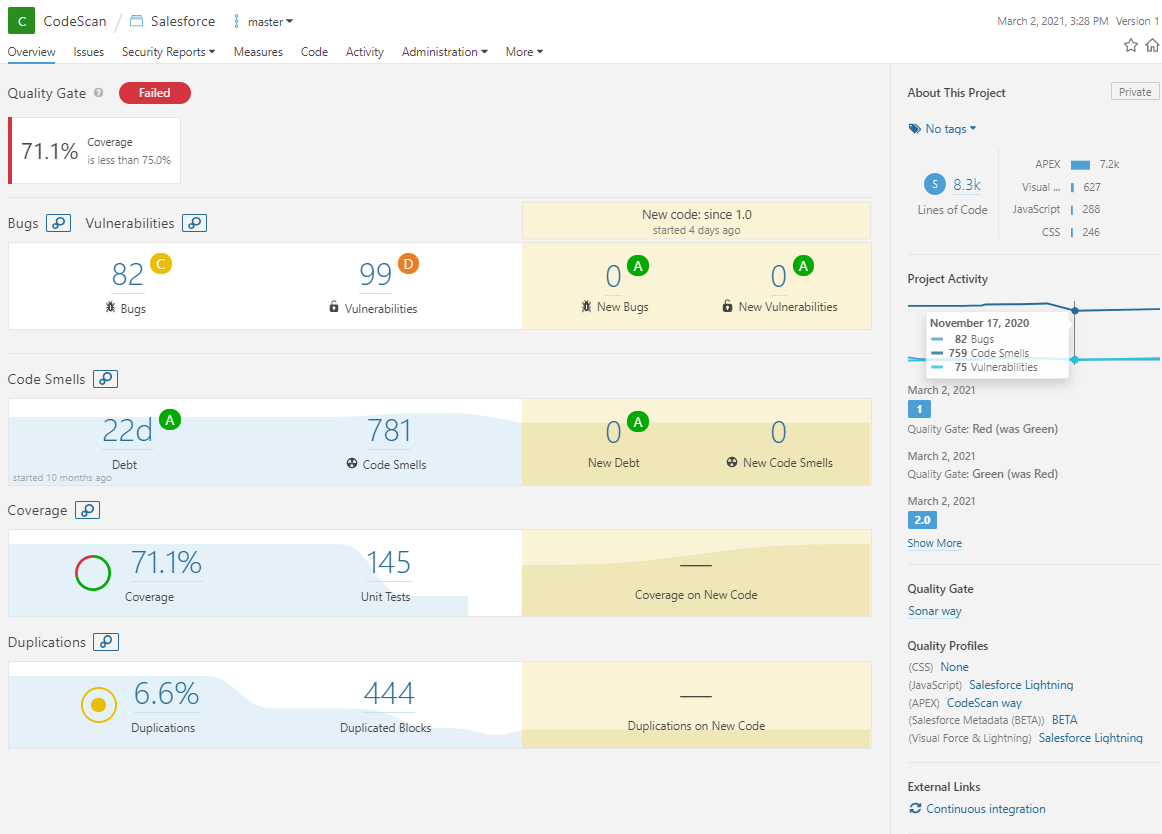
Find out How the Salesforce Ecosystem Is Approaching DevOps in 2023
As we enter the year 2023, the Salesforce ecosystem continues to evolve rapidly, and DevOps best practices in Salesforce are becoming more important than ever. With the growing demand for faster and more efficient software delivery, companies are turning to Salesforce DevOps automation and implementing various Salesforce DevOps tools to streamline their processes.
In this blog, we will explore how the Salesforce ecosystem is approaching DevOps in 2023 and provide insights into how to implement DevOps in Salesforce.
What Is Salesforce DevOps?
Salesforce DevOps is a software development approach that shares the same fundamental principles as traditional DevOps, with a specific focus on leveraging the capabilities of the Salesforce platform at scale. The main goal of Salesforce DevOps automation is to enable development teams to detect problems, identify bugs, and fix them before releasing changes to customers, resulting in more frequent and automated releases.
How to implement DevOps in Salesforce
To successfully implement DevOps in Salesforce, organizations need to focus on several key pillars. The key pillars include:
- Version Control
Version control serves as a unique source of truth and enables tracing back changes while maintaining high-quality security gates.
- CI/CD Pipeline
CI/CD involves more than simply pushing changes to production. It encompasses the entire software development process, including validating builds, automating testing, and backing up code.
- Automation Testing
Automation testing is a crucial pillar of Salesforce DevOps automation that enables efficient and accurate testing, reducing the risk of deficiencies and improving overall quality.
- Backup
The backup pillar protects against malicious attacks, Salesforce bugs, accidental deletions, and other unforeseen circumstances.
- Code Scanning
Code scanning tools help to automate the manual process of code review, improving overall code quality and reducing the risk of defects.
Understanding CI/CD
Now that you know how to implement DevOps in Salesforce, let’s delve deeper into each of the terms associated with CI/CD:
- Continuous Integration
Continuous Integration involves the continual integration of code changes into a product. With CI, every code modification made by any and all developers is incorporated and integrated into each commit.
- Continuous Delivery
Continuous Delivery guarantees the rapid and secure deployment of code into production by manually pushing each modification to a production-like environment. The process involves automated delivery of each change to a staging environment.
- Continuous Deployment
Continuous Deployment involves automatically deploying every code change that passes automated testing to production. For organizations not constrained by regulations or other factors, the aim should be to achieve Continuous Deployment.
Salesforce DevOps Tools
Let’s take a look at some of the top Salesforce DevOps tools that can streamline your deployment process and help you achieve faster time-to-market with improved quality.
- Deployment Tools
Deployment tools come with a specialized user interface that is packed with features, making deploying and managing changes much easier. Notable deployment tools to check out include Gearset, Copado, Prodly, Flosum, Autorabit, and Blue Canvas.

- Backup Tools
With specialized apps, backup tools provide a user interface that allows users to restore data from any point in time. Some of the notable tools to check out in this space include Spanning Backup, Gearset, and OwnBackup.

- Test Automation Tools
Test automation tools can run scheduled tests, ensuring that any processes built into Salesforce work no matter what changes are being made to the system. Provar and Copado Robotic Testing are great options to check out for test automation in Salesforce.

- Code Scanning Tools
Code scanning tools ensure that all team members adhere to a consistent set of code standards and best practices and maintain a healthy Salesforce org. Some notable options to consider in this category are CodeScan, PMD, and SonarQube.

DevOps best practices in Salesforce
Here are the DevOps best practices in Salesforce to help you streamline your deployment pipeline and ensure a smooth transition to a DevOps culture:
- Develop an environment strategy based on team size, release cycles, and Agile development mode.
- Set up a branching strategy that promotes collaboration and version control while minimizing code conflicts.
- Decide whether to build or buy DevOps tools. Consider client budget, tool set, in-house expertise, and other factors when making this decision.
- Establish a well-defined release management process that includes change management, testing, and automated deployment.
Conclusion
DevOps is becoming increasingly important in the Salesforce ecosystem as companies strive to deliver high-quality software at a faster pace. By implementing best practices, utilizing automation and tools, and having a well-defined strategy, businesses can effectively integrate DevOps into their Salesforce development process.
If you’re looking to implement DevOps in Salesforce or need guidance on how to optimize your current DevOps process, Manras, a Salesforce Consulting Partner, can help. Contact Manras today to learn more and schedule a consultation.



